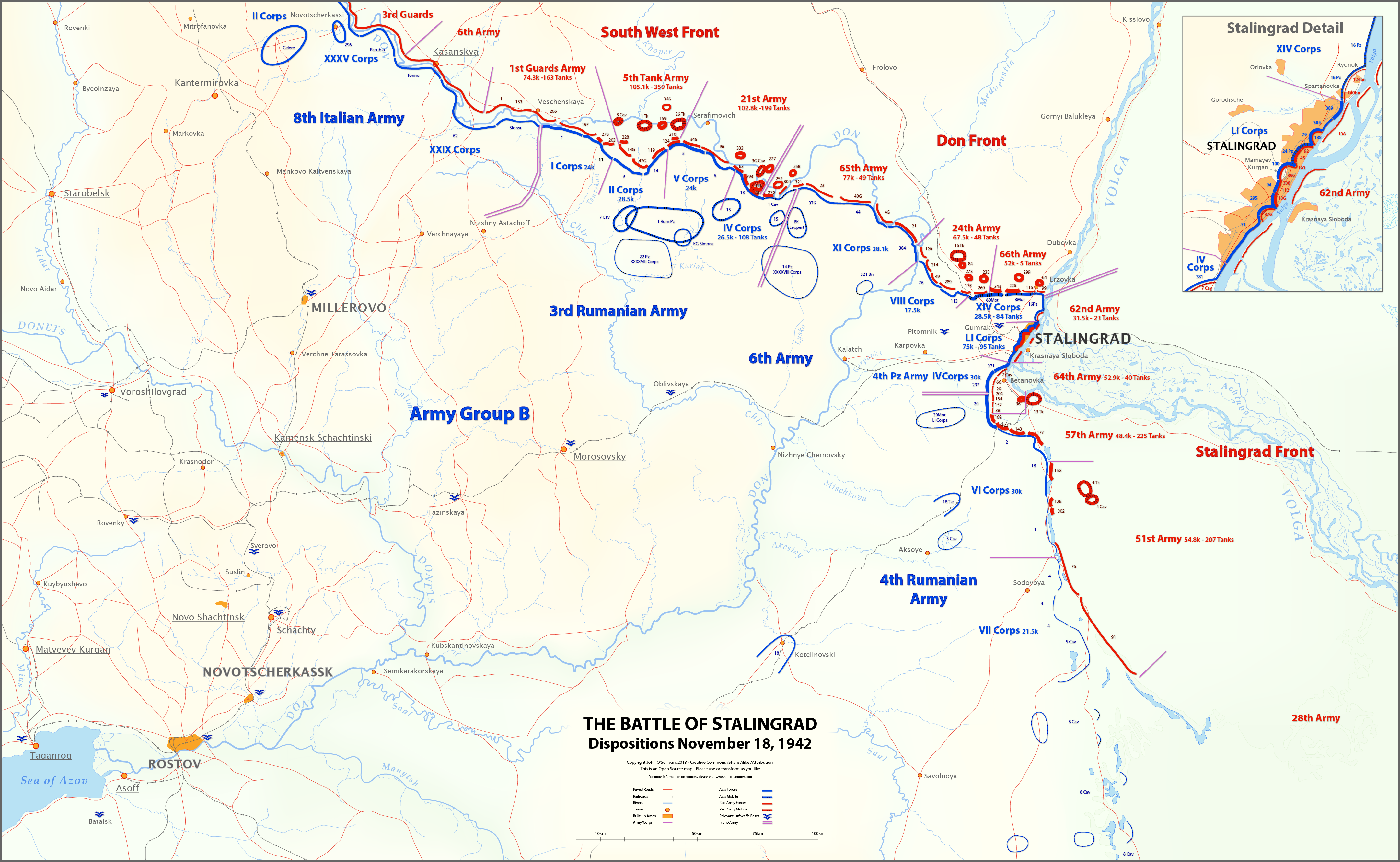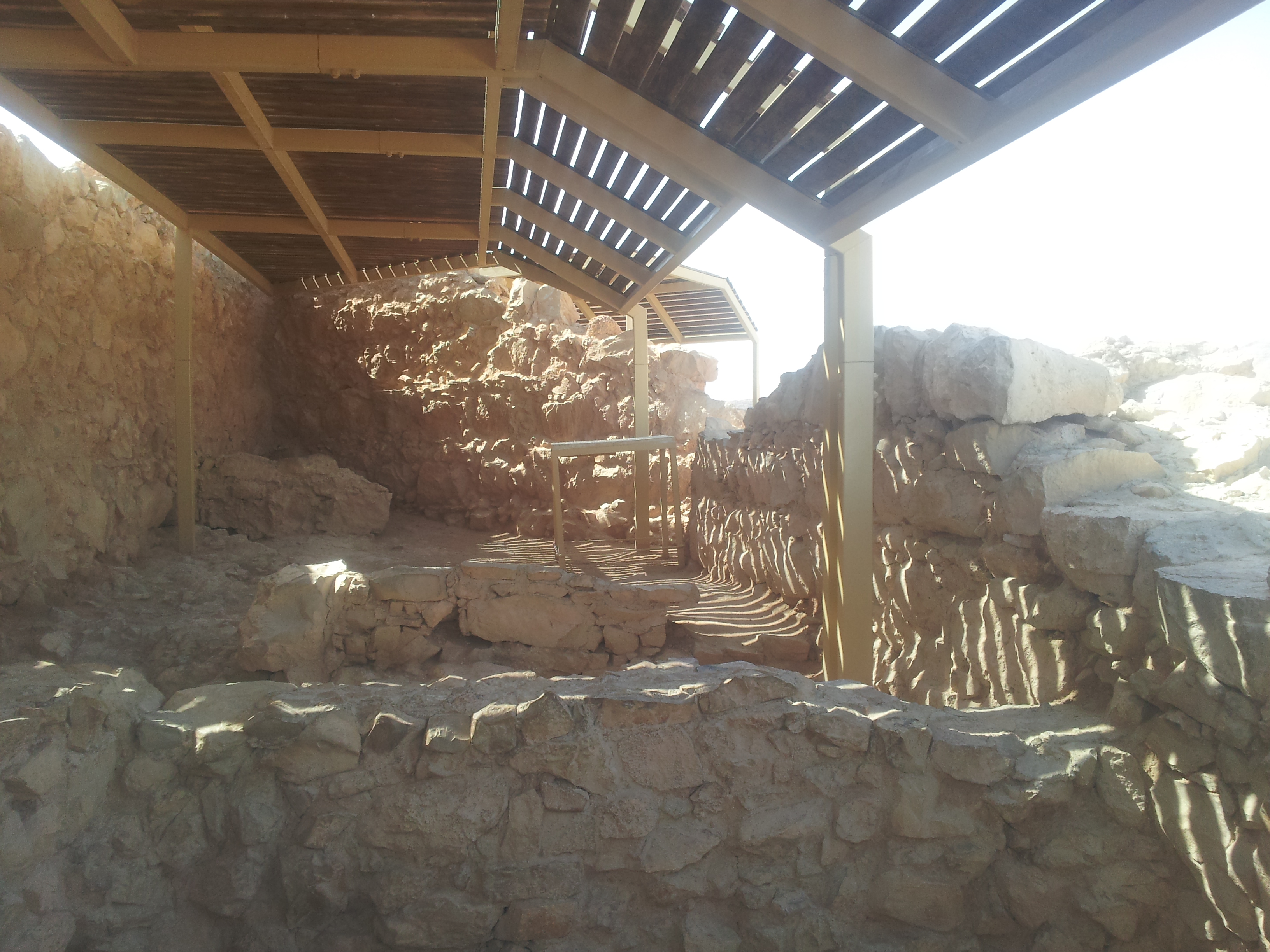|
Su-152
The SU-152 (russian: самоходная установка-152, СУ-152, Samokhodnaya Ustanovka-152) is a Soviet self-propelled heavy howitzer used during World War II. It mounted a 152 mm gun-howitzer on the chassis of a KV-1S heavy tank. Later production used an IS tank chassis and was re-designated ISU-152. Because of its adopted role as an impromptu heavy tank destroyer, capable of knocking out heavy German armoured vehicles such as the Tiger and Elefant, it was nicknamed ''Zveroboy'' ("Beast Slayer"). Development The Stalingrad counteroffensive, Operation Uranus, exposed the Red Army's urgent need for mobile heavy guns to destroy German fortifications. At the time Soviet front-line ground units did not possess sufficient firepower to deal with pillboxes and other fortifications. Close support of artillery and combat engineers was an important factor in the success of Operation Uranus. However, with rare exceptions, Soviet guns and howitzers at this time were ... [...More Info...] [...Related Items...] OR: [Wikipedia] [Google] [Baidu] |
Operation Uranus
Operation Uranus (russian: Опера́ция «Ура́н», Operatsiya "Uran") was the codename of the Soviet Red Army's 19–23 November 1942 strategic operation on the Eastern Front of World War II which led to the encirclement of Axis forces in the vicinity of Stalingrad: the German Sixth Army, the Third and Fourth Romanian armies, and portions of the German Fourth Panzer Army. The Red Army carried out the operation at roughly the midpoint of the five-month long Battle of Stalingrad, aiming to destroy German forces in and around Stalingrad. Planning for Operation Uranus had commenced in September 1942, and developed simultaneously with plans to envelop and destroy German Army Group Center (Operation Mars) and German forces in the Caucasus. Due to the length of the front lines created by the German 1942 summer offensive, which had aimed at taking the Caucasus oil fields and the city of Stalingrad, German and other Axis forces were over-extended. The Germ ... [...More Info...] [...Related Items...] OR: [Wikipedia] [Google] [Baidu] |
F1 Grenade (Russia)
The Soviet F-1 hand grenade (Russian: Фугасный > ''Fugasnyy 1'', "Explosive, Type #1"), is an anti-personnel fragmentation defensive grenade. It is based on the French F1 grenade and contains a 60-gram explosive charge (TNT). The total weight of the grenade with the fuze is about 600 grams. Due to its shape and its yellow-green color, it is nicknamed the (fem. "little lemon"). It is also nicknamed ''Efka'' (russian: Эфка) for the letter F. It is similar to the American Mk 2 "pineapple grenade", which was also ultimately modeled on the French F-1. Fuse The ''Universal'nyi Zapal, Ruchnaya Granata, Modernizirovannyi'' (UZRGM) ( Russian (language), Russian for "Universal Igniter, Hand Grenade, Improved") fuse is a universal Russian type also used in the RG-41, RG-42, RGO-78, RGN-86 and RGD-5 grenades. The standard time delay for this fuse is 3.5 to 4 seconds. However, UZRGM fuze variants are available which give delays between zero (i.e., instantaneous, spec ... [...More Info...] [...Related Items...] OR: [Wikipedia] [Google] [Baidu] |
PPSh-41
The PPSh-41 () is a Soviet submachine gun designed by Georgy Shpagin as a cheaper and simplified alternative to the PPD-40. A common Russian nickname for the weapon is "''papasha''" (), meaning "daddy", and it was sometimes called the "burp gun" because of its high fire-rate. The PPSh is a magazine-fed selective-fire submachine gun using an open bolt, blowback action. Made largely of stamped steel, it can be loaded with either a box or drum magazine and fires the 7.62×25mm Tokarev pistol round. The PPSh saw extensive combat use during World War II and the Korean War; in Eastern Bloc countries, monuments celebrating the actions of the Red Army commonly feature a PPSh-41. It became one of the major infantry weapons of the Soviet Armed Forces during World War II, with about six million PPSh-41s manufactured in this period, making it the most-produced submachine gun of the war. In the form of the Chinese Type 50 (licensed copy), it continued in use with the Viet Cong as late as ... [...More Info...] [...Related Items...] OR: [Wikipedia] [Google] [Baidu] |
Accumulator (energy)
An accumulator is an energy storage device: a device which accepts energy, stores energy, and releases energy as needed. Some accumulators accept energy at a low rate (low power) over a long time interval and deliver the energy at a high rate (high power) over a short time interval. Some accumulators accept energy at a high rate over a short time interval and deliver the energy at a low rate over longer time interval. Some accumulators typically accept and release energy at comparable rates. Various devices can store thermal energy, mechanical energy, and electrical energy. Energy is usually accepted and delivered in the same form. Some devices store a different form of energy than what they receive and deliver performing energy conversion on the way in and on the way out. Examples of accumulators include steam accumulators, mainsprings, flywheel energy storage, hydraulic accumulators, rechargeable batteries, capacitors, inductors, compensated pulsed alternators (compulsators), ... [...More Info...] [...Related Items...] OR: [Wikipedia] [Google] [Baidu] |
Torsion Bar
A torsion bar suspension, also known as a torsion spring suspension, is any vehicle suspension that uses a torsion bar as its main weight-bearing spring. One end of a long metal bar is attached firmly to the vehicle chassis; the opposite end terminates in a lever, the torsion key, mounted perpendicular to the bar, that is attached to a suspension arm, a spindle, or the axle. Vertical motion of the wheel causes the bar to twist around its axis and is resisted by the bar's torsion resistance. The effective spring rate of the bar is determined by its length, cross section, shape, material, and manufacturing process. Usage Torsion bar suspensions are used on combat vehicles and tanks like the T-72, Leopard 1, Leopard 2, M26 Pershing, M18 Hellcat, M48 Patton, M60 Patton and the M1 Abrams (many tanks from World War II used this suspension), and on modern trucks and SUVs from Ford, Chrysler, GM, Mitsubishi, Mazda, Nissan, Isuzu, LuAZ, and Toyota. Class 8 truck manufacturer Kenw ... [...More Info...] [...Related Items...] OR: [Wikipedia] [Google] [Baidu] |
Casemate
A casemate is a fortified gun emplacement or armored structure from which guns are fired, in a fortification, warship, or armoured fighting vehicle.Webster's New Collegiate Dictionary When referring to antiquity, the term "casemate wall" means a double city wall with the space between the walls separated into chambers, which could be filled up to better withstand battering rams in case of siege (see Antiquity: casemate wall). In its original early modern meaning, the term referred to a vaulted chamber in a fort, which may have been used for storage, accommodation, or artillery which could fire through an opening or embrasure. Although the outward faces of brick or masonry casemates proved vulnerable to advances in artillery performance, the invention of reinforced concrete allowed newer designs to be produced well into the 20th century. With the introduction of ironclad warships, the definition was widened to include a protected space for guns in a ship, either within the h ... [...More Info...] [...Related Items...] OR: [Wikipedia] [Google] [Baidu] |
Josef Kotin
Josef (also Jozef, sometimes Zhozef) Yakovlevich Kotin (russian: Жозеф Яковлевич Котин; 10 March 1908, Pavlograd, Russian Empire - 21 October 1979, Moscow) was a Soviet armored vehicle design engineer, Head of all three Leningrad armor design bureaux (1937–39), Chief Designer of the Narkomat for Tank Industry (1939-1941), Deputy Narkom for the tank industry of the Soviet Union (1941-1943), Director of the VNII-100 Research Institute at Kirov Plant, Deputy Defense Industry Minister of the Soviet Union 1968-1972. He is best known for leading the design of some of the Kliment Voroshilov tanks, IS tank family, T-10 tank, SU-152 self-propelled heavy howitzer, Kirovets K-700 tractor and many other armored vehicles and heavy machinery. Josef Kotin received the title of Hero of Socialist Labour The Hero of Socialist Labour (russian: links=no, Герой Социалистического Труда, Geroy Sotsialisticheskogo Truda) was an honorific title in ... [...More Info...] [...Related Items...] OR: [Wikipedia] [Google] [Baidu] |
Casemate
A casemate is a fortified gun emplacement or armored structure from which guns are fired, in a fortification, warship, or armoured fighting vehicle.Webster's New Collegiate Dictionary When referring to antiquity, the term "casemate wall" means a double city wall with the space between the walls separated into chambers, which could be filled up to better withstand battering rams in case of siege (see Antiquity: casemate wall). In its original early modern meaning, the term referred to a vaulted chamber in a fort, which may have been used for storage, accommodation, or artillery which could fire through an opening or embrasure. Although the outward faces of brick or masonry casemates proved vulnerable to advances in artillery performance, the invention of reinforced concrete allowed newer designs to be produced well into the 20th century. With the introduction of ironclad warships, the definition was widened to include a protected space for guns in a ship, either within the h ... [...More Info...] [...Related Items...] OR: [Wikipedia] [Google] [Baidu] |
Chelyabinsk
Chelyabinsk ( rus, Челя́бинск, p=tɕɪˈlʲæbʲɪnsk, a=Ru-Chelyabinsk.ogg; ba, Силәбе, ''Siläbe'') is the administrative center and largest city of Chelyabinsk Oblast, Russia. It is the seventh-largest city in Russia, with a population of over 1.1 million people, and the second-largest city in the Ural Federal District, after Yekaterinburg. Chelyabinsk runs along the Miass River, and is just east of the Ural Mountains. The area of Chelyabinsk contained the ancient settlement of Arkaim, which belonged to the Sintashta culture. In 1736, a fortress by the name of Chelyaba was founded on the site of a Bashkir village. Chelyabinsk was granted town status by 1787. Chelyabinsk began to grow rapidly by the early 20th century as a result of the construction of railway links from the Russian core to Siberia, including the Trans-Siberian Railway. Its population reached 70,000 by 1917. Under the Soviet Union, Chelyabinsk became a major industrial centre during the 193 ... [...More Info...] [...Related Items...] OR: [Wikipedia] [Google] [Baidu] |
Leningrad
Saint Petersburg ( rus, links=no, Санкт-Петербург, a=Ru-Sankt Peterburg Leningrad Petrograd Piter.ogg, r=Sankt-Peterburg, p=ˈsankt pʲɪtʲɪrˈburk), formerly known as Petrograd (1914–1924) and later Leningrad (1924–1991), is the second-largest city in Russia. It is situated on the Neva River, at the head of the Gulf of Finland on the Baltic Sea, with a population of roughly 5.4 million residents. Saint Petersburg is the fourth-most populous city in Europe after Istanbul, Moscow and London, the most populous city on the Baltic Sea, and the world's northernmost city of more than 1 million residents. As Russia's Imperial capital, and a historically strategic port, it is governed as a federal city. The city was founded by Tsar Peter the Great on 27 May 1703 on the site of a captured Swedish fortress, and was named after apostle Saint Peter. In Russia, Saint Petersburg is historically and culturally associated with ... [...More Info...] [...Related Items...] OR: [Wikipedia] [Google] [Baidu] |


_2.jpg)




